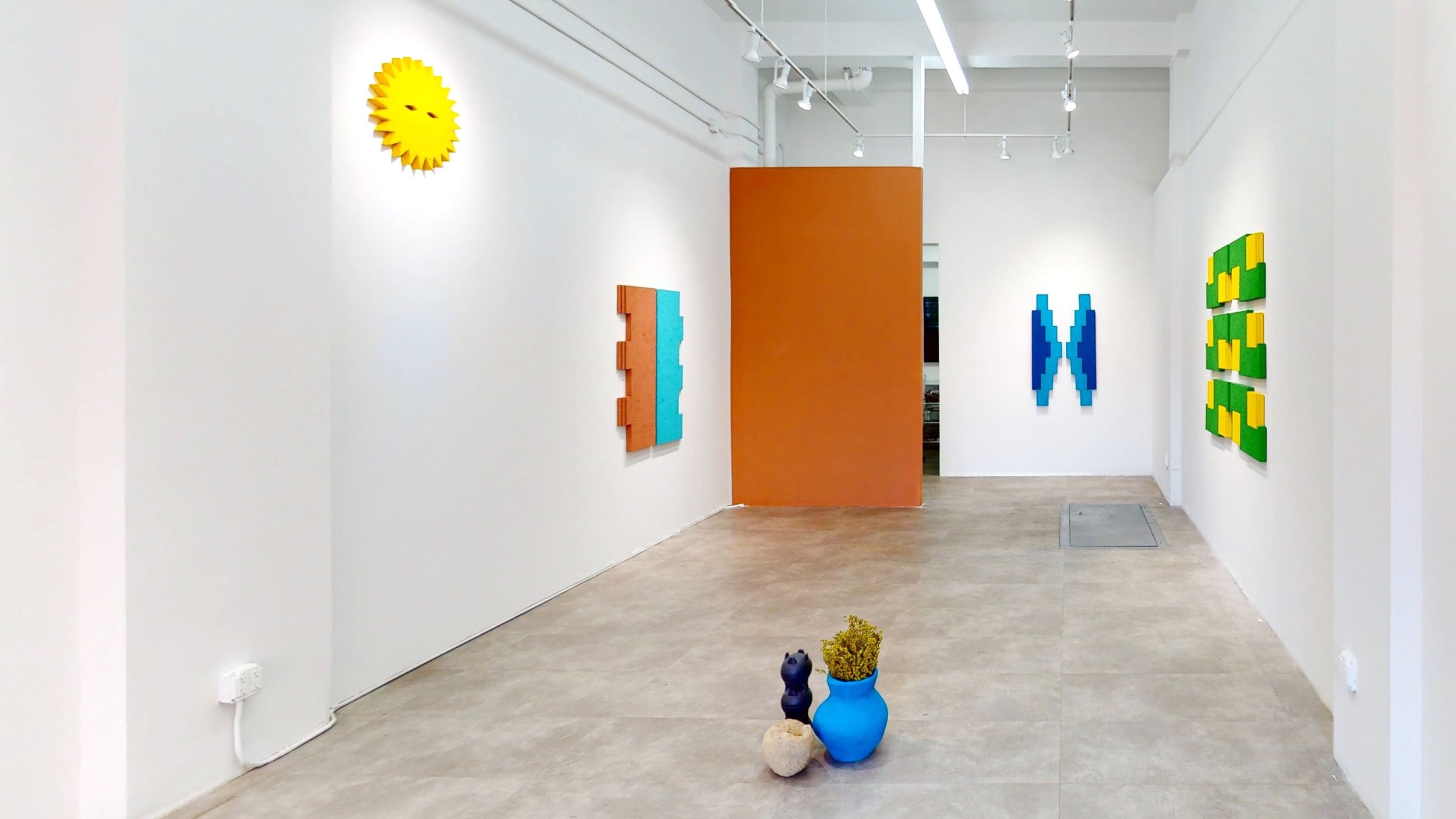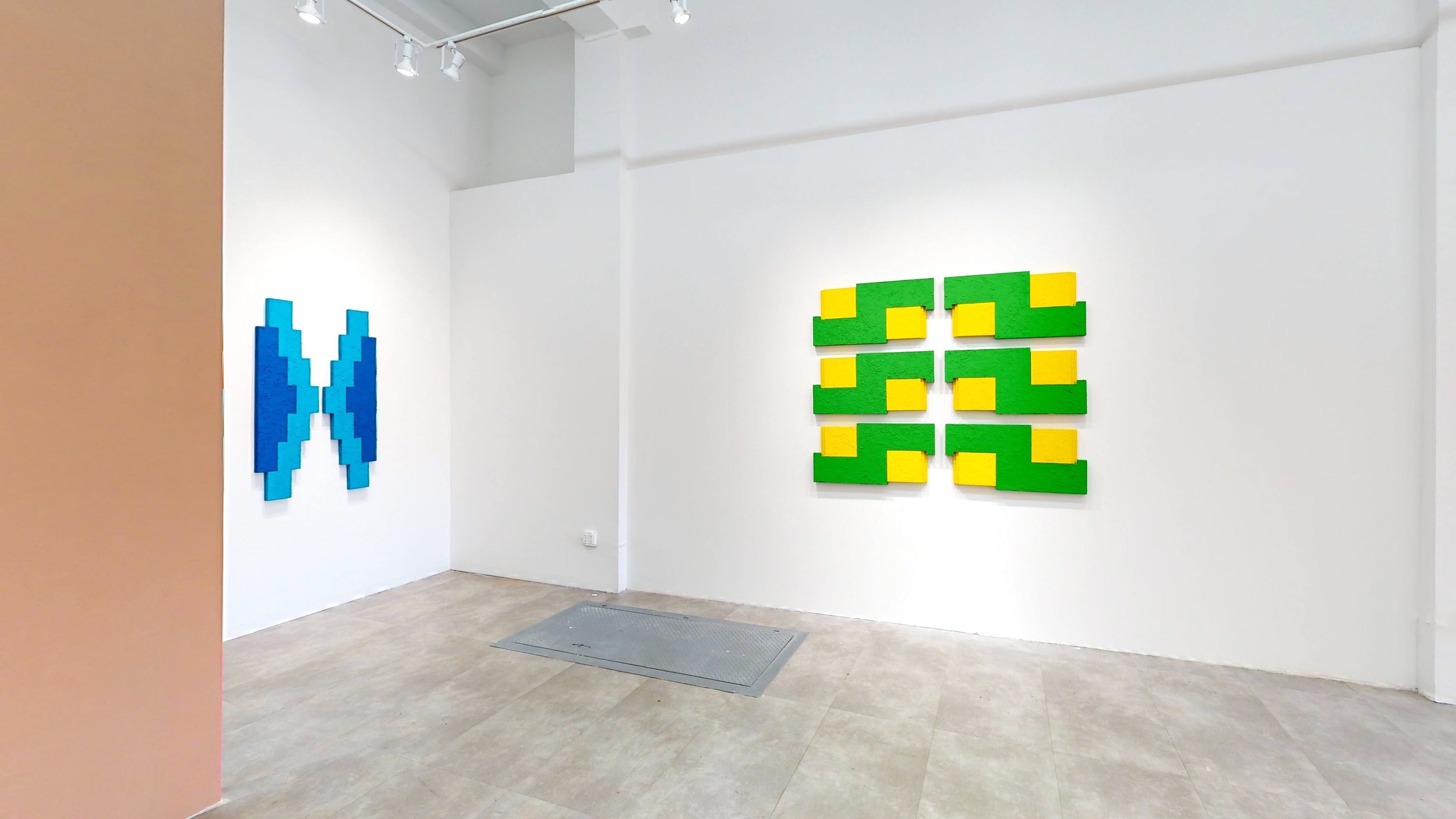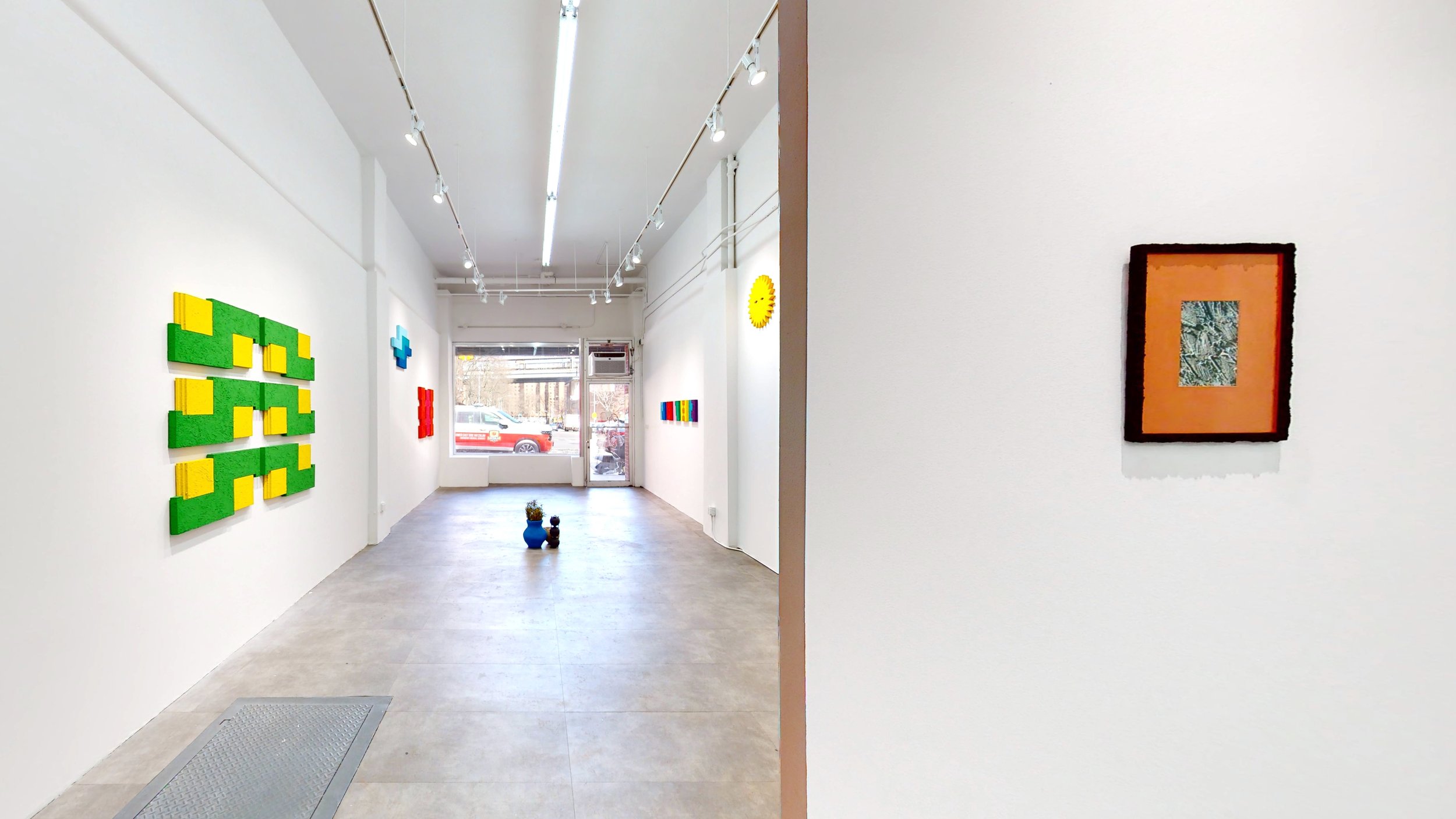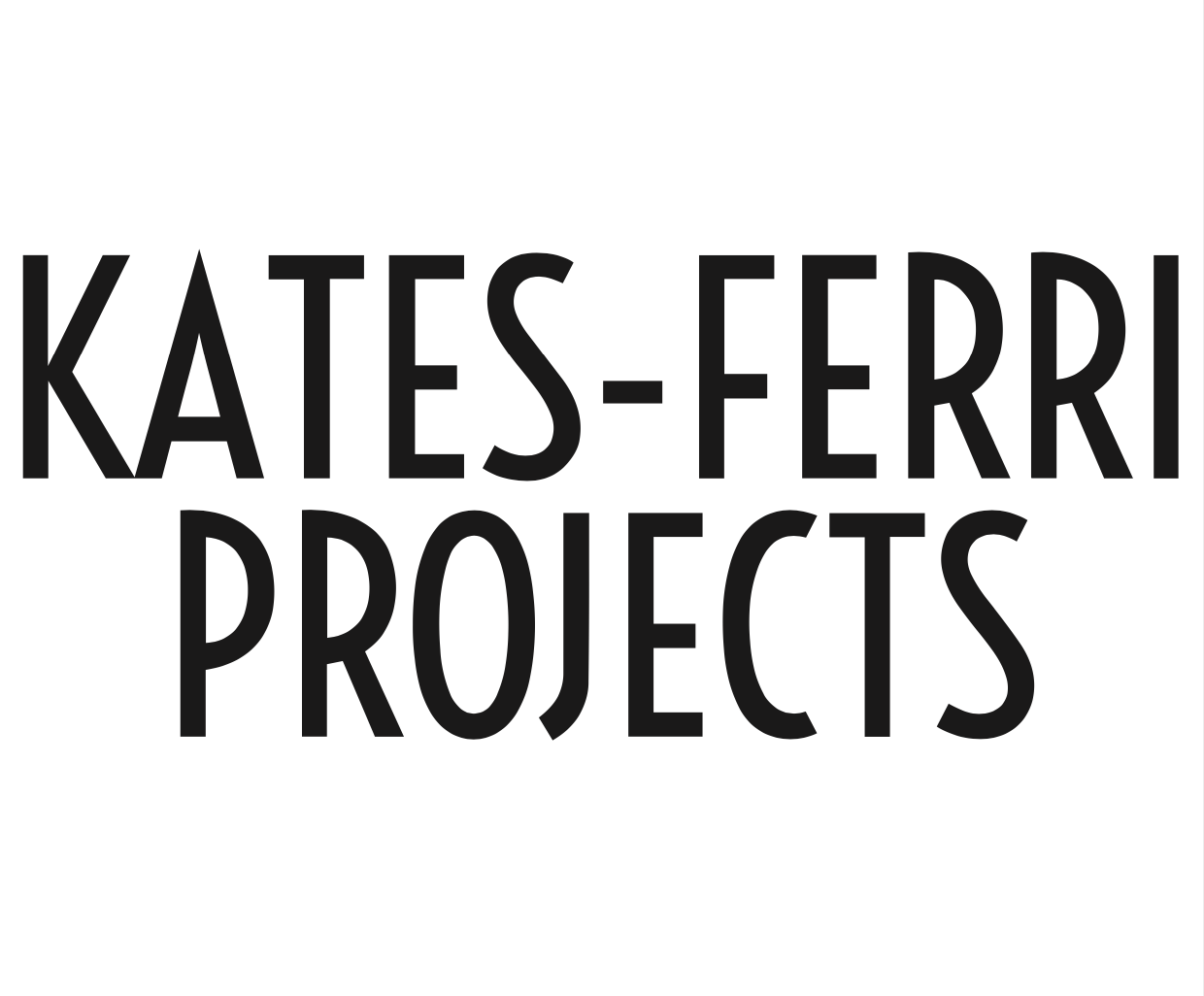#024 Muro’s (Burning Lights In The Desert): Eric Manuel Santoscoy-Mckillip
561 Grand Street NYC 10002 - March 20 - April 15, 2023












KATES-FERRI PROJECTS is proud to present Muro’s (Burning Lights In The Desert), Eric Manuel Santoscoy-Mckillip’s first solo exhibition in New York City from March 20 to April 15, 2023 with an artist reception on Friday, March 24th from 6-8pm at Kates-Ferri Projects located at 561 Grand Street, NYC 10002.
Muro is Spanish for “wall”. Eric Santoscoy-Mckillip’s sculptural paintings are covered in brightly colored stucco texture, suggestive of interior and exterior walls. These radiant colors and patterns are found in vernacular architecture on both sides of the fluid borderland between the United States and Mexico. Santoscoy-Mckillip magnifies these oft-unnoticed similarities. It is not the Mesoamerican cultural motifs he monumentalized, but rather the ignored trim surrounding a room or a baseboard close to the ground of homes and stores that residents interact with daily. By drawing attention to these quotidian elements, the artist questions the physical divide between the nations and finds space to create new narratives.
Born to a Mexican-American family and raised in El Paso, Texas, Santoscoy-Mckillip understands both the tension and harmony that exists at the US-Mexico border. He juxtaposes one shape and color with another shape and color to suggest the existing relationships between the nations, their people and continued potentials. Sometimes the forms in the work burrow into each other, while in others, there is a literal gap between two or more related forms, and some are both. Canyon (2022) is an example of both. Two sets of staggered dark blue steps come together in the center untouched and part ways at the top and bottom forming a visual “X”, while light blue triangular forms nestle against the dark blue to the left and right of the “X”. The negative space formed between the shapes alludes to the tension and attraction of the two sides. His work subtly describes the elusive border dynamics, shared languages while abstracting iconography.
Santoscoy-Mckillip suggests the cultural similarities at the border are greater than the differences in his work. A wall can always be a loaded and divisive political term historically and present. Using formal color theory in the vein of Josef Albers’s Interactions of Color, Santoscoy-Mckillip argues that the components of his wall paintings work together, in both form and color. Rather than the rhetoric of divisiveness of nationhood, the artist emphasizes the shared humanity and interconnected culture of the people living at the border.
Eric Santoscoy-Mckillip is an artist living and working in Brooklyn, NY. He was born in 1989 and raised in the U.S./Mexico borderland city of El Paso, Texas. Eric earned a BFA from the University of Texas at Austin, in 2011, a Masters in Interdisciplinary Studies from the University of Texas at El Paso in 2015 focusing on art education and border studies, and a MFA in Fine Art from the New York University in 2017. He has shown in Texas, New Mexico, and New York.
Artist Statement: Moving between painting and sculpture, my work is an examination of place and identity through the use of color, symbols, space, and textures by reclaiming what has already been reclaimed. The transitions between these elements shift, overlap and blur to reflect the physical and metal in-between space of the US-Mexico borderland, the continually changing complex identities and histories of myself and of the geographic region. My practice is a tool to reassess the narratives I was told to be true or that I have pieced together myself and those that have been passed on by oral, familial, and communal histories. I use it to connect to people and places I no longer can and reflect on imagery through the time I spent with it. Building a lexicon through different techniques, like making and using stucco as both a texture and protectant or applying layers of paint to abstract the underlying form, I am paying respect to the lineage of the painting (i.e. sand painting, sign painting, car painting, murals, landscape) in the southwest and US/Mexico border culture while using a both minimal/maximal language to isolate, bring specificity and focus on this place that is fleeting, shifting and changing.
Press Release Exhibition Catalogue Price List Art Works on View Exhibition on YouTube

